July 22, 2019 – So how expensive is Dubrovnik and how much time do you need to visit? One travel blogger’s view.
(Editor’s note: A couple of years ago, TCN was a guest of the Dubrovnik Tourist Board for the Feast of St. Blaise, the patron saint of the city, and the absolute best time to visit Dubrovnik in my opinion. Over lunch, I asked how they dealt with the perception that Dubrovnik was expensive.
“Expensive compared to what? Is Dubrovnik more expensive than Venice, or Paris, or Madrid? This is how you should compare how expensive is Dubrovnik. You cannot compare it to Croatia.” An interesting angle I had not considered before.
We are delighted to welcome Norm Bour to TCN. Norm featured in a recent interview as part of our digital nomad series – you can read his interview here – and offered to send us some observations about his time in Croatia. We start with a topic that is often hotly debated. One man’s view on How expensive is Dubrovnik, and how long to you need to see it?
Welcome, Number 134! If you would like to write for TCN about the Croatia where you are, please contact us on news@total-croatia-news.com)
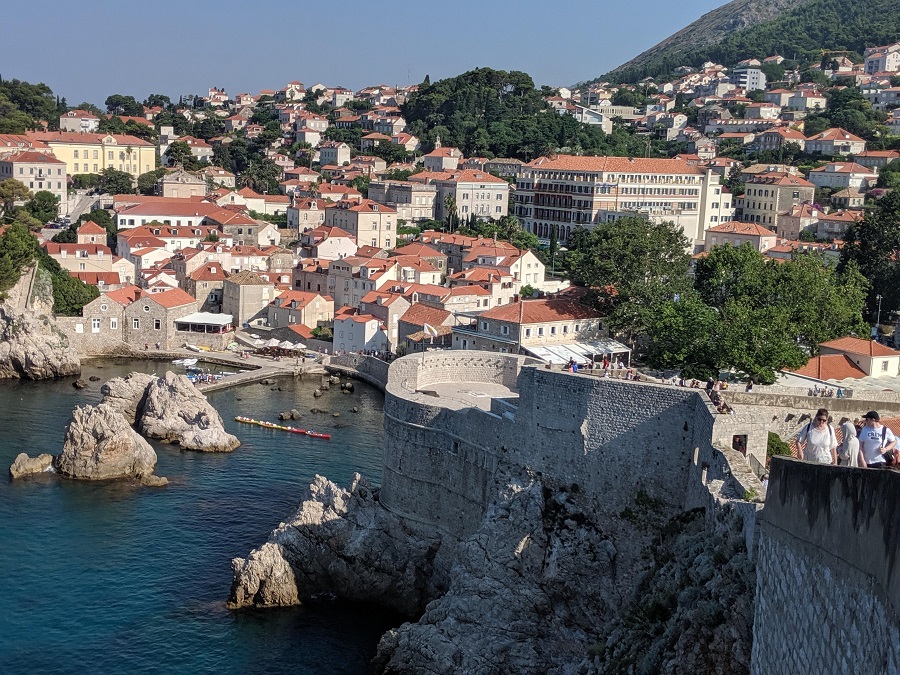
The expression says, “figures lie and liars figure,” but when it comes to figuring the differences in comparing what it costs to visit Dubrovnik versus many other cities in Croatia, we don’t need to lie.
Dubrovnik is expensive.
After spending six weeks around Split and Kastel Kambelovac we were quite happy with the differences between Croatia prices and what we spent in our prior city in California.
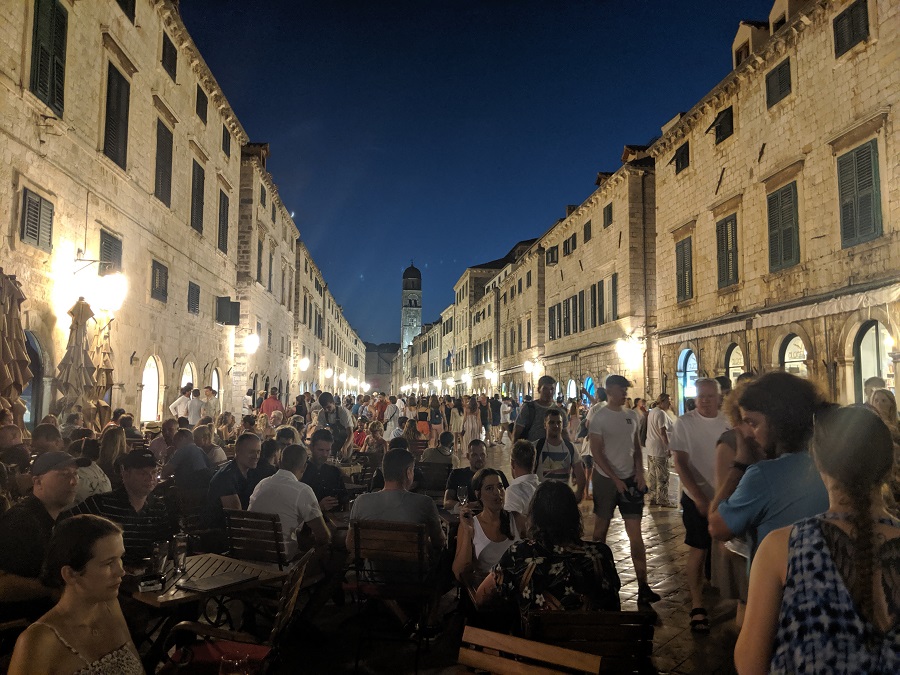
A “typical” California coffee at any shop would normally run about $3.00 to $4.00, whereas a white coffee (which we preferred) was about 12 kuna, about $1.82 in US dollars. Almost all the shops near Split were in that range, so when we had coffee in Dubrovnik we were shocked to find them at 28 to 32 kunas. I wasn’t sure if they used different water, imported their coffee from the moon or just plain took advantage of their customers who were there for just that once, and never to return. But common sense and annoyance made us realize that it was just because the cost of doing business behind the walls was expensive.
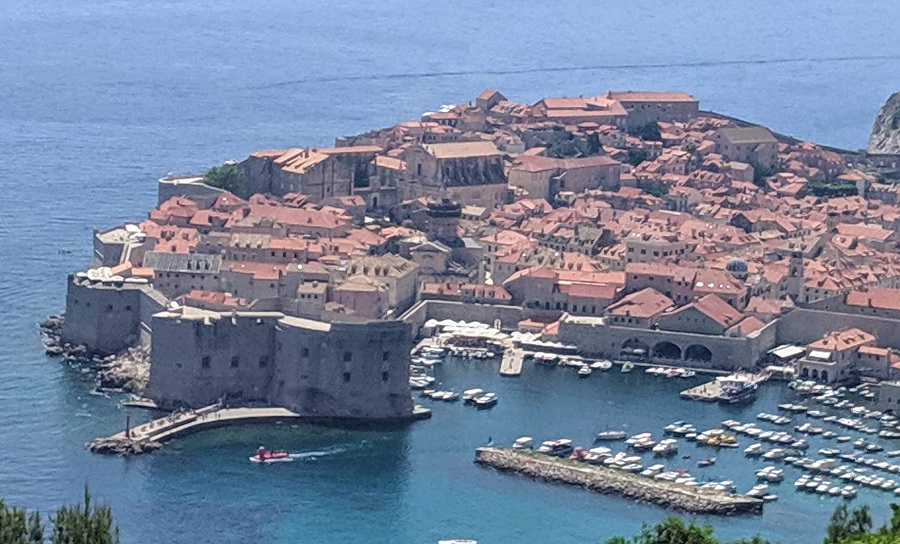
Overall we found food and drink prices to be 150 to 300 percent higher than other places we visited. Pastries, gelato and small meals were modestly more expensive, and a dinner for two was about 1.5 times more than what we were used to.
Aside from the food prices, another noteworthy figure is the number of visitors they get on an “average” summer day, which ranges from 8,000 to 10,000. This causes the locals and leaders in Dubrovnik great concern. The truth is, most of those visitors are grouped into just a few square miles and walking in the streets becomes a hot, dreary ordeal.
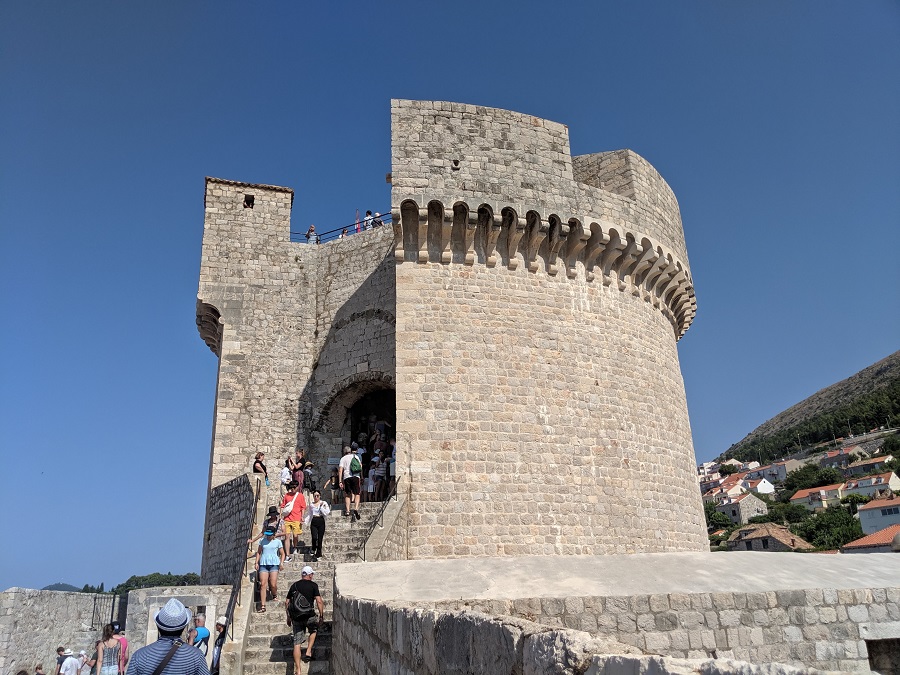
On one July day they measured over 8000 visitors landing just from cruise ships, even though there is a 5000 person limit from two allotted landings. Add in those that came via tour buses, ferries from other ports and auto traffic, you can figure that 10,000 per day throughout the summer is a realistic number.
Mayor Mato Frankovic seems to be focused and committed to controlling the excessive numbers. The question is, “How do you fix this?” Do you create a lottery system or introduce a tax during summer months?”
This last number is a random, arbitrary number but one that I see posted all the time on various blogs: “How long should you allow to visit Dubrovnik?”
There is no number that fits everyone so I can only share my own bandwidth and those of my friends whom I was with.
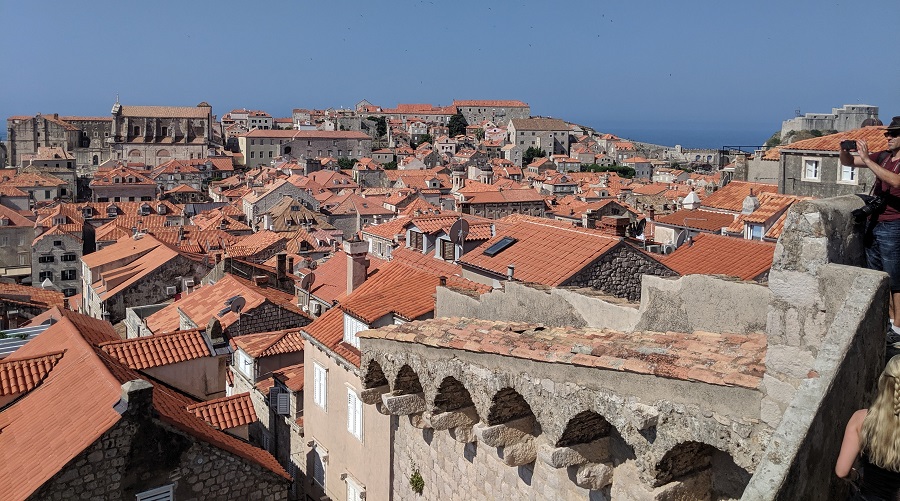
If you are a shopper, and love shopping for clothes, knick knacks and souvenirs, you could easily spend one entire day just doing that. There is no lack of vendors to choose from and they will happily offer their wares to take home.
If you love to eat (and who doesn’t?) there are multiple tiers of restaurants and cafes throughout the entire city. Climb up the stairs from the main boulevard and you will find a whole new row of eateries.
And then, there’s The Wall.
I thought for less than 30 seconds before I decided to pay the 200 kuna to walk the wall and I was glad for that. Even with the 32 plus degrees temps and bumper to bumper people, it was a unique experience. As a travel writer I have visited too many castles to count and this one ranks at the top, from the grandeur of the surrounding water to the majesty of the turrets of the Fortress Bokar, and the sense of history throughout the walk.
That walk requires two hours according to those that know, and I think that’s about right depending upon crowds.
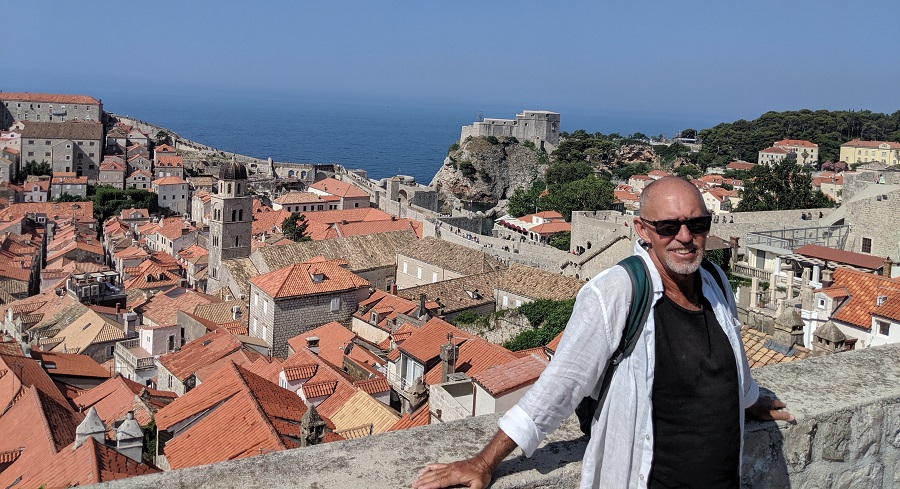
As to the question of how long, I think that one solid day to walk the walls, walk the streets and visit a few shops is probably enough. Add in some time for a coffee, ice cream or beer, along with at least one meal, and that fills an entire day. So with that said, I think an overnight stay is more practical.
Get there early in the morning, walk the wall while it’s still cool, enjoy a leisurely lunch, and go take a break and maybe a nap. There are plenty of lodging options in the city so you can usually walk to your room. Clean up, grab dinner and enjoy the vibrant nightlife and different perspectives in the dark and get enough rest to return the following day. How much time you spend on day two is dependent on what you’re into and want to visit in more detail.
What are your thoughts? IS 1.5 days enough or not enough to spend in the walled city??
Norm Bour is a travel writer and blogger who teaches others how to “travel younger.” A Baby Boomer who permanently left the US in February 2019, Norm stays at different locations six weeks at a time, with no intention of stopping. He never traveled outside the US until 2016, but watched how the Millennials traveled affordably and with a great sense of adventure and fun. At age 64, he and his girlfriend decided to learn from those that were doing it right and is committed to inspiring Baby Boomers of any age to live their dream. Follow their journey at his Facebook blog under Travel Younger.
To learn more about the Pearl of the Adriatic, check out the Total Croatia Dubrovnik in a Page guide.








